Results 2,641 to 2,650 of 12094
Thread: Anandtech News
-
02-12-13, 02:00 PM #2641
Anandtech: Times are Changing: Intel Building an IPTV Service + Box
The most interesting things at CES were the things that weren't at CES. While I'll discuss the others in due time, one notable absence from CES was the often rumored Intel set-top box. Erik Huggers, the head of Intel's new Media division, confirmed today that Intel was working on a complete IPTV solution: service, software and hardware, all to be sold direct to consumers.
Erik confirmed that Intel Media was an all new group within Intel, staffed with folks from Apple, Netflix and Google among other places. Erik himself came from the BBC's Future Media & Technology group. Intel seems to know that it can't pull something like this off using internal talent alone. Bring in smart outsiders then give them the support of Intel seems to be the approach here - and it makes sense.
Details are scarce, and I'd expect them to be for quite some time. Intel committed to launch the box and service this year and it'll support features like catch-up, video on demand as well as live TV - all delivered over the internet. A list of content providers as well as pricing are two notable bits of information that were missing from today's disclosure. Until we get closer to launch, I wouldn't expect to hear anything on either front. Intel did mention that this wasn't a value play, and there was a strong focus on content bundles, which means this is likely not a full á la carte solution that's going to drive cable TV providers out of business.
I'll refrain from speculating publicly here, but there's a lot that makes this interesting. Some questions to ask:
1) Why is Intel getting into the TV business? Why now?
2) If not competing aggressively on pricing, then how will Intel differentiate?
3) Intel's divisions traditionally require high operating margins to survive in the long run. 
Unlike Intel's smartphone aspirations, its work in the TV space won't have the time to eventually build up steam. Intel also won't have the burden of playing catch up in a quickly maturing industry. The established players in the cable TV space have done a great job of stifling innovation for quite a while. It's clear that a more revolutionary approach is necessary to liberate live TV content. The question is whether or not Intel can be the first company to succeed where others have failed.
Many expected Apple to be the first to tackle and succeed here. Perhaps Intel will beat them to the punch? (this helps answer question #1 above).
More thoughts on this later. 
 

More...
-
02-12-13, 08:00 PM #2642
Anandtech: LG 29EA93 Monitor Review - Rev. 1.25
I really dislike writing negative reviews. Writing one means that I’ve spent a good deal of time with a product while not enjoying the experience. It means that a team of engineers and designers has spent a lot of time working on something that didn’t make the cut, or they made a series of compromises for some reason that led to an end user experience that was unsatisfying. I’d much rather write effusive praise of a wonderful product that people should run out and buy than write something bad.
Typically when I write a negative review, I either hear a little feedback from a company, or nothing at all. Maybe they knew the product wasn’t great but released it anyway, or they didn’t care. Sometimes I hear that a company will fix something, and then I try to hold onto hardware and test that to see if they do, but I’ve never had feedback like I did from LG after I initially reviewed their 29EA93 ultra-widescreen monitor.
I had multiple emails full of detailed questions about how I test, what I was after, and what should be done to improve upon the current version. After all of these conversations, they flew out an engineer with an updated version of the 29EA93 that they said would address almost all of my issues with the first version. Did LG manage to go back and correct the problems that I found, so that the monitor now performs much better? I had to go ahead and test it to find out.

More...
-
02-12-13, 11:30 PM #2643
Anandtech: Micron P400m Review (200GB)
Micron has remained one of the more stable players in the SSD space over the past few years. Although not typically at the top of our charts, Micron (and its consumer brand, Crucial) have generally paired the latest in NAND technology with custom firmware that’s well validated. It sounds like a simple combination, but it’s so rarely found in an industry that’s growing quickly enough to both those that are first to market as well as those that are most reliable.
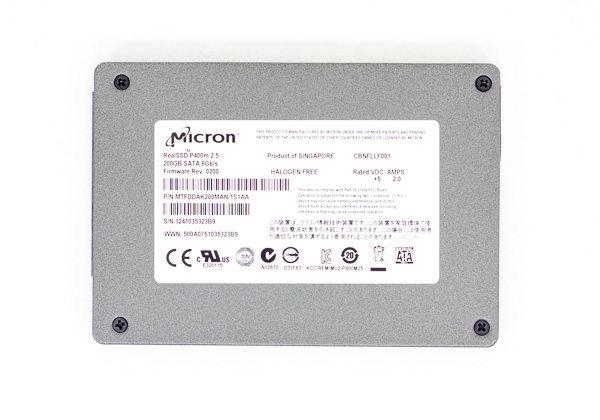
On the enterprise front, Micron is looking to fill a gap in its product lineup. In the 2.5” SATA form factor, Micron really only had two offerings: the dated SLC-based P300, and the entry level P400e. The former was built for a market that has increasingly moved to high-endurance MLC NAND, while the latter wasn’t robust enough to deal with any of the more write-heavy enterprise environments. Filling the gap is the drive we’re looking at today: Micron’s P400m. Read on for our full review!

More...
-
02-13-13, 10:30 AM #2644
Anandtech: Microsoft Surface Pro Teardown: mSATA SSD Inside
After we published our Surface Pro review I went back and updated it to confirm that the SSD inside was indeed of the mSATA variety. My particular review sample used a Micron C400 mSATA SSD, similar to what I reviewed here a while back. Today, the patient folks at iFixit tore their Surface Pro apart and offered visual confirmation: the Surface Pro SSD is mSATA and technically, if you can get inside the system, it can be upgraded.
While I applaud Microsoft for sticking with an industry standard SSD interface and not something proprietary, iFixit discovered that getting into Surface Pro isn't all that easy. While Surface RT was built from three discrete pieces of VaporMg (kickstand, frame and back panel), Surface Pro only has two (kickstand and the frame with integrated back). The downside to this simplification is that the only way into Surface Pro is to soften the adhesive that holds the display stack in place and pry it out. This tends to be a potentially destructive way of getting into a device, so if you're planning on buying a 64GB Surface Pro and upgrading to a larger SSD yourself you might want to keep this in mind.
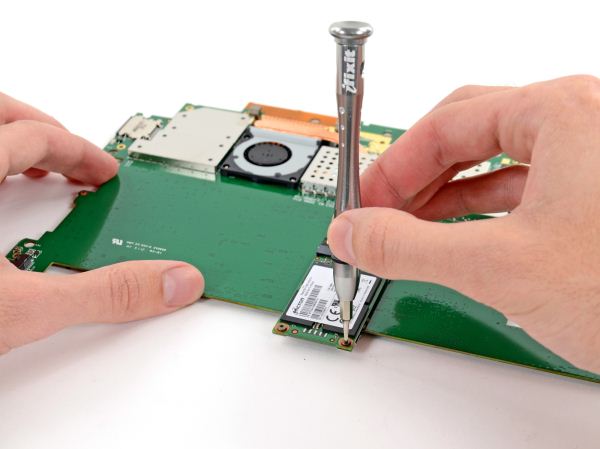
If you're still undeterred, it looks like you should be able to at least physically swap the Surface Pro SSD with something bigger. There's a whole other discussion about compatibility - I'm not sure what has been tested and validated with Surface Pro, but from a physical standpoint the SSD is upgradeable.

More...
-
02-13-13, 11:30 AM #2645
Anandtech: Apple Cuts Pricing on MacBook Pro with Retina Display and SSD Upgrades
Earlier this morning Apple announced a combination of price cuts and spec updates to its MacBook Pro with Retina Display lineup. The price cuts impact the 13-inch rMBP, while the spec bumps extend across almost all models.
The good news is the price of the base and upgraded 13-inch rMBPs have dropped to $1499 and $1699, respectively. The 15-inch model remains untouched. The upgraded 13-inch rMBP configuration has a slightly faster Core i5 CPU (2.6GHz base clock instead of 2.5GHz, I believe this is a Core i5-3230M). The faster CPUs are nice to see, especially since that's really the only way to improve UI performance at this point until Apple brings some more software tweaks to OS X.
On the 15-inch side, both configurations get a 100MHz faster base clock (i7-3635QM and i7-3820QM most likely). The upgraded 15-inch model now comes with 16GB of DDR3L-1600 by default.
While default storage configurations don't change, SSD upgrade pricing does. The 512GB and 768GB SSD upgrades drop in price a bit depending on what configuration you're looking at. For the upgraded 15-inch model, moving to a 768GB SSD is now a $400 upgrade. That's not a lot for a 768GB drive, but it doesn't take into account the cost of the base 512GB SSD you are paying for but don't get to keep.MacBook Pro with Retina Display Pricing Model 13-inch (base) 13-inch (upgraded) 15-inch (base) 15-inch (upgraded) Old Price $1699 $1999 $2199 $2799 New Price $1499 $1699 $2199 $2799 Old CPU 2.5GHz Core i5 2.5GHz Core i5 2.3GHz Core i7 2.6GHz Core i7 New CPU 2.5GHz Core i5 2.6GHz Core i5 2.4GHz Core i7 2.7GHz Core i7 Old Memory 8GB DDR3L 8GB DDR3L 8GB DDR3L 8GB DDR3L New Memory 8GB DDR3L 8GB DDR3L 8GB DDR3L 16GB DDR3L Old SSD 128GB 256GB 256GB 512GB New SSD 128GB 256GB 256GB 512GB
Overall these are welcome changes to pricing and specs. It was clear from the start that the MacBook Pro with Retina Display would eventually fall down to more reasonable prices, and this is likely the beginning of that curve. As high DPI displays become more commonplace, we'll see continued decline in the pricing department. These price cuts do come several months before the introduction of Haswell based rMBPs. Haswell's impact on the rMBP should be greatest on the 13-inch model, where the improved GPU performance will be able to make up for the fact that there's no discrete GPU (assuming Apple integrates Haswell GT3e silicon). You'll also see modest gains in idle power consumption, but the big platform battery life gains really come with Haswell ULx chips which we won't see until closer to the end of the year and will be used in tablets/convertibles.MacBook Pro with Retina Display Storage Pricing Model 13-inch (base) 13-inch (upgraded) 15-inch (base) 15-inch (upgraded) 128GB SSD - - - - 256GB SSD +$200 - - - 512GB SSD +$500 +$300 +$300 - 768GB SSD +$900 +$700 +$700 +$400

More...
-
02-13-13, 09:00 PM #2646
Anandtech: Nexus 4 JDQ39 4.2.2 OTA Update Removes Unofficial LTE on Band 4
Just after it launched, we discussed how the Nexus 4 included undocumented support for LTE on Band 4 (AWS) which could be enabled simply by choosing the appropriate RAT (Radio Access Technology) under Phone Info (by dialing *#*#4636#*#* - INFO). Back then, I noted that it was highly unlikely this would stick around for very long without the proper FCC paperwork, and although it took a bit longer than I expected, today's 4.2.2 update does away with this unofficial support for LTE entirely. 
The OTA update for the Nexus 4 includes both software changes to Android (4.2.2 build JDQ39) along with a new baseband software image in the form of a delta update (radio.img.p). I tested the Nexus 4 the same way as I did in the previous article, on an Anritsu MD8475A base station emulator, which enables me to test any configuration or band network, and setup a Band 4 LTE network to attach the Nexus 4 to.
Before the OTA update, with the appropriate "LTE Only" selection made in the aforementioned "Phone Info" menu for preferred network type, the Nexus 4 would quickly attach to Band 4 LTE. After applying the update, the handset no longer attaches at all. In addition, trying to select the "LTE Only" preferred network type now quickly changes back to "WCDMA Preferred," likewise choosing one of the other modes which include LTE results in a change back to "WCDMA Preferred" after exiting and coming back. Previously this setting would persist until a reboot took place. 
I'm not surprised that undocumented LTE on Band 4 was removed, I am surprised however that it took this long. This also settles any lingering questions about LG Electronics filing for a Class II permissive change for the Nexus 4 to enable LTE on the bands supported by the hardware. If having support for LTE on Band 4 on your Nexus 4 is important to you, I'd recommend holding off on updating with the OTA zip for now, no doubt people will also make their own update images without the radio update as well.
The Android 4.2.2 update includes a number of other small changes as noted by other users, including enhanced quick toggles that can be long pressed to toggle WiFi or Bluetooth. 
Source: Google (OTA .zip link)

More...
-
02-13-13, 11:30 PM #2647
Anandtech: Nanoxia Deep Silence 2 Case Review: Trimming the Fat
Just recently we had a chance to review Nanoxia's Deep Silence 1, arguably the most impressive silent case we've ever tested. Nanoxia was able to produce an enclosure capable of delivering substantial air flow to components while still containing fan noise. In a market where silent cases usually lose a lot of their luster once overclocking enters the picture, the Deep Silence 1 was a breath of fresh air and proof that you could build a powerful system that you never had to hear.
In a bid to capture some of that sweet, sweet boutique volume, Nanoxia has refreshed the Deep Silence 1 into a slightly less expensive enclosure: the Deep Silence 2. The DS2 is an odd bird; it's a trimmed down DS1, but not heavily so, and in certain ways it can feel like a refinement. That all sounds incredibly promising, but did Nanoxia lose some of the potency of the original chassis in the process?

More...
-
02-14-13, 08:30 AM #2648
Anandtech: Vizio Thin+Light CT15: Performance Ultrabook on a Budget
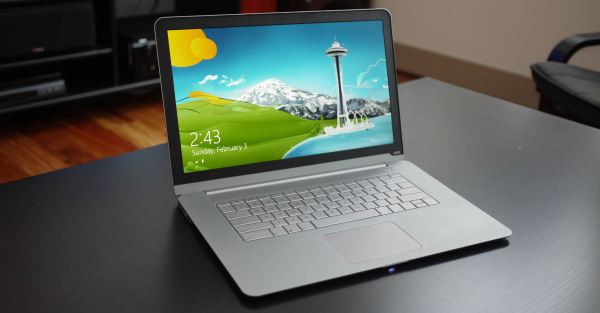
Last year was very eventful in the notebook world. Beyond the UX upheaval brought on by Windows 8 and the blurring of the line between notebooks and tablets, we’ve seen two high-profile entrants to the realm of notebook PC hardware, Razer and Vizio. Both are well established tech companies that have experience shipping high-quality products in their respective gaming and HDTV market areas. This type of thing doesn’t happen very often, and while it’s not on the level of Microsoft jumping into the PC hardware ring, it’s an interesting trend to note.
Contrary to Razer’s focused, single-device launch targeting the gaming market, Vizio jumped into the mainstream PC game head first, debuting three different products—an Ultrabook, a notebook, and an all-in-one. Given Vizio’s history of delivering solid, high-resolution LCD HDTVs on a budget, these systems were pretty highly anticipated, with cutting edge industrial design and high-grade style on a relative budget, but they definitely had some usability issues at launch. After the Windows 8 update though, it seemed like some of those issues would be fixed and the post-holiday sales have made them very tempting options in the ultraportable space. Today we’ll be looking at their Thin+Light Ultrabook, which is available in 14” and 15.6” sizes. Ours is the top-spec CT15-A5, which comes with a 15.6” 1080p IPS display panel, an ultra-low voltage Core i7, 4GB of memory, and a 256GB solid state drive. The CT15-A5 is readily available in the $800-900 range at both the Microsoft Store as well as Amazon, making it an excellent deal for the hardware involved. Does the potential it has on paper hold up in real life evaluation? Read on.

More...
-
02-14-13, 11:30 AM #2649
Anandtech: Tegra 4 Shipment Date: Still Q2 2013
Last night NVIDIA's CEO, Jen-Hsun Huang, stated that shipments of its Tegra 4 SoC to customers would begin in Q2. A few outlets incorrectly assumed this meant Q2 of NVIDIA's fiscal year, but I just confirmed with NVIDIA that Jen-Hsun was referring to calendar Q2 - in other words, the period of time between April and June 2013.
Jen-Hsun also confirmed what was announced at CES: Shield, the handheld Android gaming device (with PC streaming capabilities) based on Tegra 4, would also ship in Q2. Jen-Hsun did add that Shield will show up in the latter part of Q2, which likely points to a late May/June launch.
Gallery: NVIDIA's Project Shield - Hands On





In short, there's no new news here. NVIDIA mentioned Q2 as the release timeframe for Shield at its press event at CES last month. Obviously Shield can't launch without Tegra 4, so it's safe to say that Tegra 4 will also be shipping in Q2. 
The rest of the earnings call was pretty interesting. GPU revenues are still solid despite maturing processor graphics solutions (although growing slowly), and Tegra revenue was up 50% over the previous year thanks to the success of Tegra 3. NVIDIA is still struggling on the smartphone side, but tablets have been a huge part of the success of the Tegra business unit.

More...
-
02-14-13, 04:00 PM #2650
Anandtech: Anand's Thoughts on Intel's TV Initiative
Earlier this week Intel announced what we'd heard rumors of in months past, that it would be creating an IPTV service along with a custom software and hardware platform to deliver it direct to consumers. A few hours after the announcement, I had the opportunity to speak with Erik Huggers, formerly of the BBC and currently heading up Intel's new Media division.
For years Intel has tried to grab a slice of the TV business. Remember the Intel CE series of Atom based SoCs? How about Sandy Bridge's Intel Insider technology? Both of these were focused attempts to solve problems within the TV industry, but both ultimately went no where. Intel's solutions thus far have been too narrow in scope to do anything.
 
The TV today reminds me a lot of smartphones in the early 2000s. There's tons of potential, but largely ruined by slow hardware, kludgy user interfaces and heavy fragmentation both on the content side and on the cross platform compatibility side. Much like the smartphone, the solution to revolutionizing the TV as a platform is unlikely to come from within the existing market. And just like the smartphone revolution, a disruptive solution here may very well come from a computing company.
 
Read on for my thoughts on Intel's new TV initiative.

More...
Thread Information
Users Browsing this Thread
There are currently 17 users browsing this thread. (0 members and 17 guests)








 Quote
Quote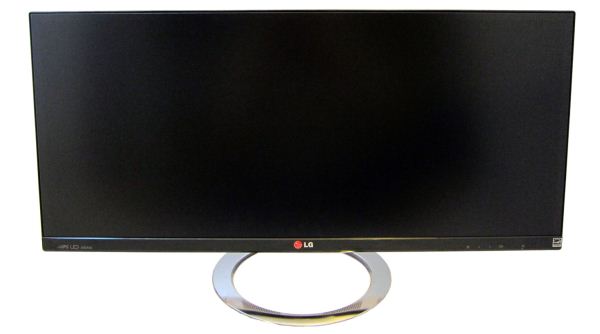
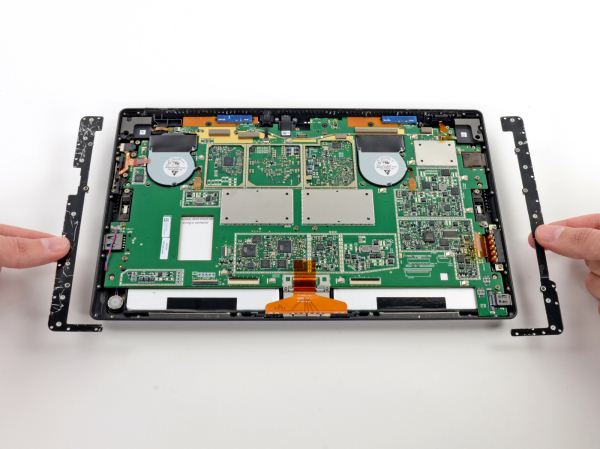


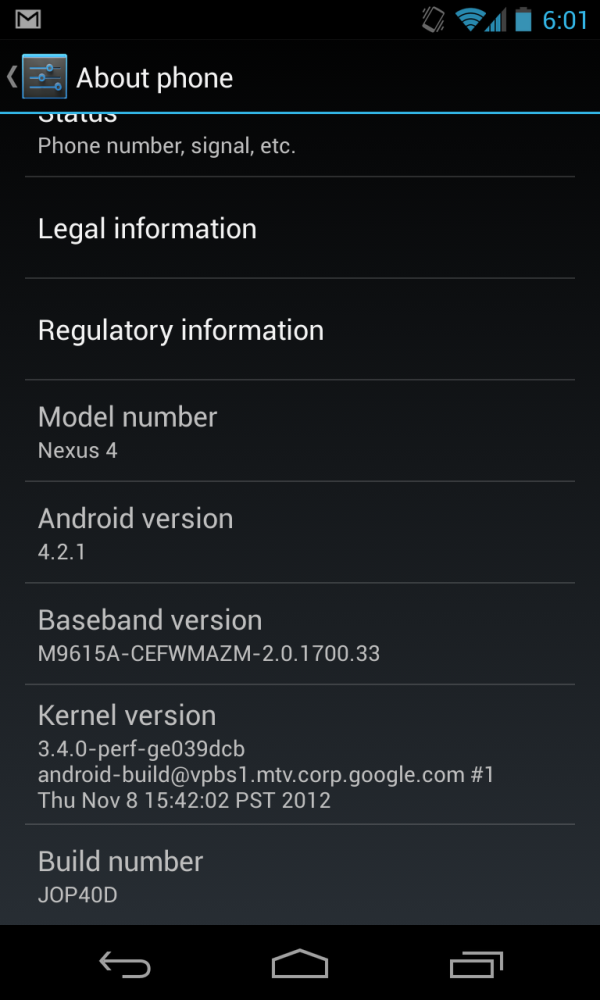
.jpg)
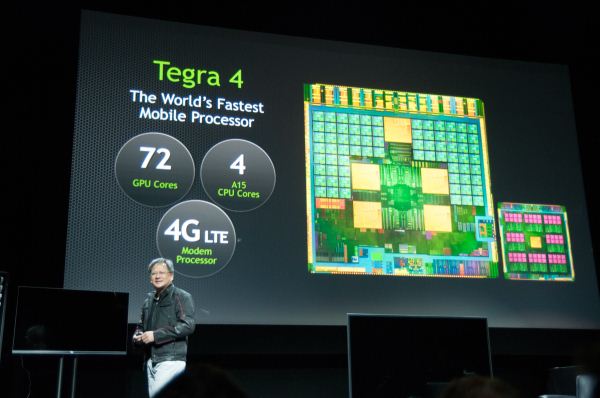
















Bookmarks